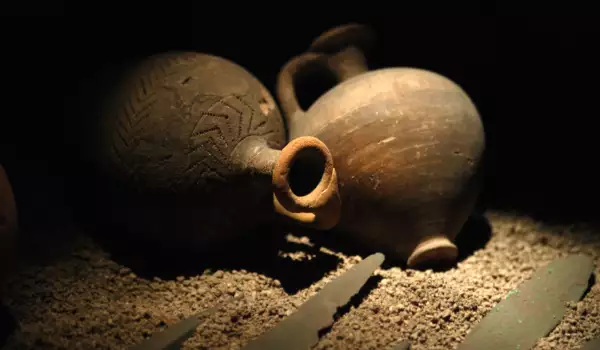Baghdad Battery is the common name for several artifacts found in the lands of ancient Mesopotamia. The world learns of the existence of Baghdad Battery years later when Germany archaeologist discovers a warehouse. After it undergoes a serious analysis, the German archaeologist, concluded that the instrument found produces electricity and is used by the ancient inhabitants of galvanizing vessels.
The allegation, however, was met by the scientific world and means that our ancestors were able to create a battery almost 2 thousand years ago.

The aim of batteries
Despite the many experiments that were conducted for 60 years after the discovery of the Baghdad Battery, in the scientific world there is still no definite explanation for what they served. Scientists are still unable to unite around 3 hypotheses for the use of the batteries.
At the time, when the batteries were dated to about 2000-2500 years ago, they have been used for two basic plating techniques which still apply. One was machined with a hammer of precious metals, the goal was to get thin strips. The other option was to mix the gold with mercury. These techniques are effective but labor was too intensive compared to the overlapping of small but dense layers of metal by electrolysis. In 1978 this method was tested after connecting multiple copies of the Baghdad Battery, which grapefruit juice was poured for electrolyte. The result, according to Dr. Arne Egbert was affixing a layer of silver, only one-tenth of a millimeter thick on the surface of an object. However, similar experiments failed to show the same results.
Medical functions
Yet Ancient Greeks were aware of facts that, by a small electrical charge pain can be relieved from an human. At the same time when the inhabitants of Mesopotamia, used batteries, the Chinese developed treatment through Acupuncture. According to advocates of the theory of medical battery function, this would explain the presence of many objects found with some Baghdad artifacts. Against this argument, however, is the fact that the maximum charge obtained of the batteries is no more than 2 volts. It would be ineffective for the relief of pain. Moreover, in ancient times, people were familiar with various tools and analgesic action containing cannabis, opium and wine.
Religious mystification
Another opinion about the use of Baghdad Battery is that they were used in temples as part of a cheap trick to attract worshipers, and therefore money. It was possible for a Battery to be placed in a statue. When people come to pray to the statue, they were admitted to a special room individually. Pilgrims ask the statue a questions then touched it and then the battery would give a small measure of an electrical shock, and maybe a mysterious answer which meant that the answer is no. Otherwise, when the Battery were excluded, the statue was give any electric shocks and the person knew that the answer is yes. So congregation were convinced of the divine forces of the status, then, of course, left a solid donation for the temple.
Subsequent studies
In 1940, William Grau, an engineer in the electrical laboratory in Pitsfiyld, USA, met with the hypothesis of Koenig. Using drawings and details, provided by a German rocket engineer, Willie Gray they make a copy of the battery. He uses a solution of copper sulphate and managed to produce half a volt of electricity. In 1970 Arne Egbert, a German Egyptologist, also makes a copy of the battery and then filled it with freshly squeezed grapefruit juice. According to him it was the way the Baghdad Battery was used in ancient times. Egbert used a copy of the improved achievement of Willie Gray and produced a 0.87 volt current. Thus, scientists were able to clearly demonstrate that the ancient inhabitants of Mesopotamia have managed to invent a whole battery 1, 800 years before the Italian physicist Volta.










